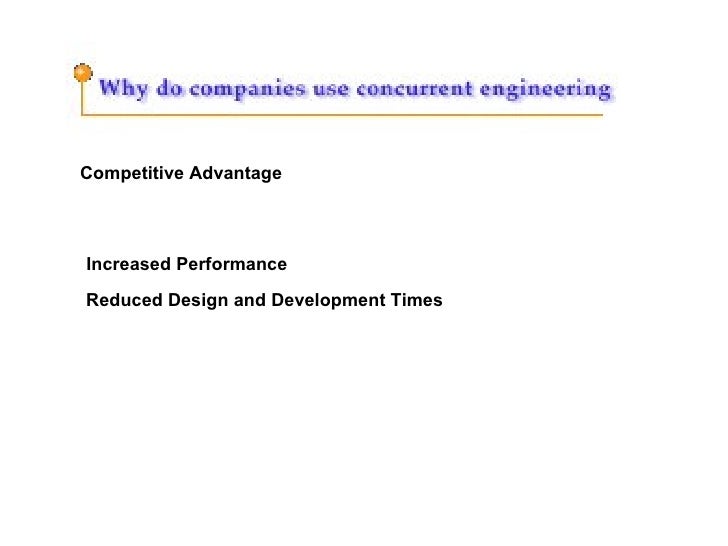Advantages Of Concurrent Engineering

Concurrent engineering is a systematic approach to the integrated, concurrent design of products and their related processes, including manufacture and support. This approach is intended to cause the.
No notes for slide• This slide presentation was prepared by a student in the Quality Management course at Penn State University. • Concurrent engineering is the two disciples of product and process design working together to save time and resolve problems quickly. • Another definition for concurrent engineering. This one specifically mentions the ideal nature of Concurrent Engineering to resolve problems quickly.
Competitive Advantages Of Concurrent Engineering
• This is the Basic design approach for both Conventional process and Concurrent Engineering. • These are the goals that management should push to the teams involved in CE. Organizations instituting CE are looking to achieve in their production. • Almost by definition, CE is about teamwork.
Communication is vitally important between all participating members and the more ideas that come together, the better the product, and profit, will ultimately be. Another important factor in CE is the balancing of needsbetween customer, suppliers, engineers, marketing, and manufacturing. • Most experts who analyze CE say that these 3 areas, People, Process, and Technology are the 3 main areas needed to successfully implement CE.
All of these areas require thought and rethinking. Each area will be observed in detail on the following slides. • Anyone who comes in contact with, or is affected by, the product in question should be involved on the team. These teams usually include engineers, analysts, manufacturers, personnel, customers, and suppliers.
Training is for the tools used in CE, usually computer aided drafting. Another important yet overlooked training is in non-technical areas, such as problem-solving and conflict resolution.

• A large part of CE is re-engineering the product development process. Many organizations have processes they refuse to change, but doing so could doom them to failure. When instituting CE, be willing to change and update your development process in order to keep things moving successfully. • It’s very hard, if not impossibly, to fine a CE firm that does not utilize computer-aided drafting or computer-aided manufacturing. Like the processes however, be willing to change your software system if a more pervasive one comes along. Your choices of hardware, software, and networking applications make CE efforts successful, especially in today’s global, virtual business world.
• When instituting CE, building teams and training your people is the most important thing to do. CE is based on teamwork so you must have member of different disciplines who are able to communicate their intentions clearly. When dealing with process and tech., the basic tenet is to be willing to change, and not be stuck in your current ideas.
Be able to use Computer-aided drafting and/or computer-aided manufacturing in order to aid your CE implementation. • A block diagram representing the process time of Concurrent and Sequential Engineering. • Titan Linkbit developed a 8 layer circuit board over the course of 21 weeks. After implementing new tools in CE, the firm began a new process to develop a 10 layer circuit board with twice the functionality of the old board. With the new processes in place, this new board took only 12 weeks to develop.
• These are various benefits of Concurrent Engineering. • The basic thing to remember is that CE will allow you to simultaneously design your product and your process. It will allow you to solve problems quickly and at a fraction of the price.